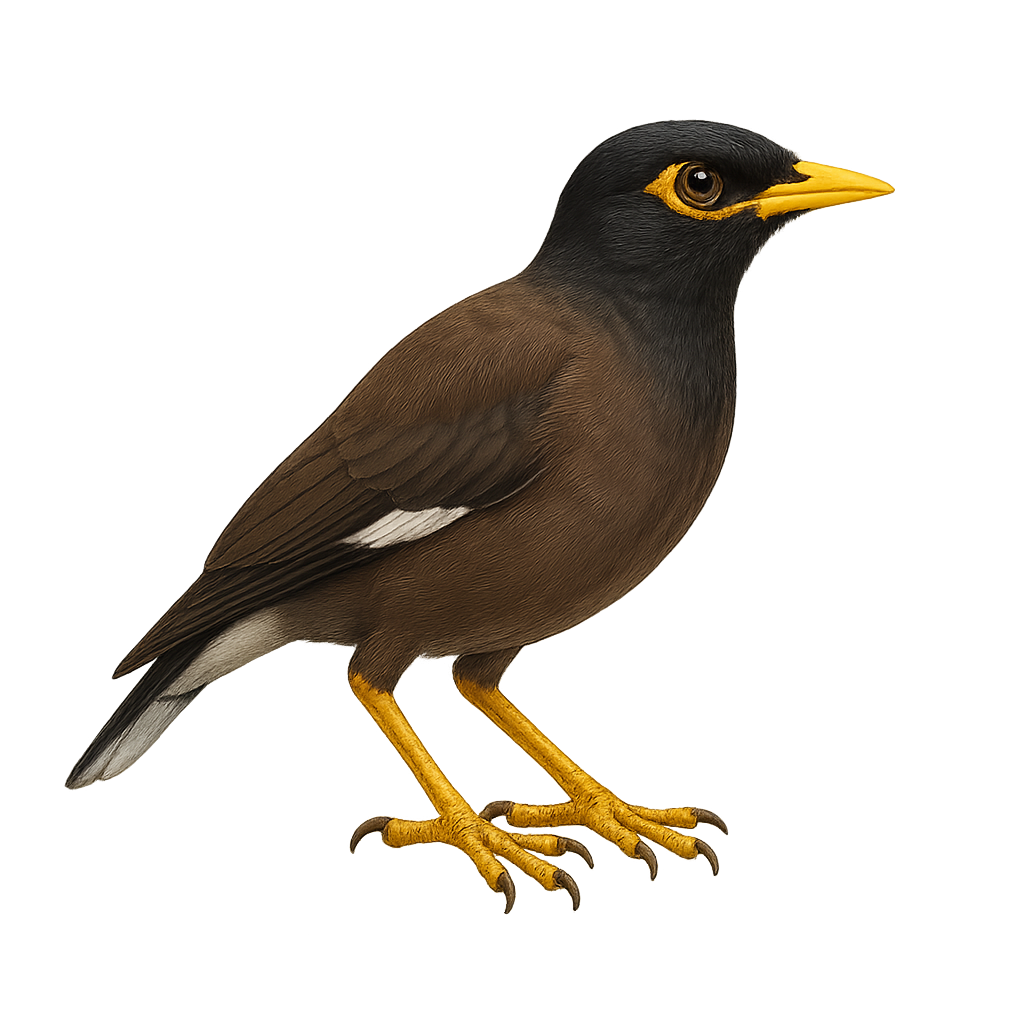Your wildlife photography guide.
Explore the common myna in detail, study its behavior, prepare your shots.
Where to observe and photograph the common myna in the wild
Learn where and when to spot the common myna in the wild, how to identify the species based on distinctive features, and what natural environments it inhabits. The WildlifePhotographer app offers tailored photography tips that reflect the common myna’s behavior, helping you capture better wildlife images. Explore the full species profile for key information including description, habitat, active periods, and approach techniques.
Common Myna
Scientific name: Acridotheres tristis

IUCN Status: Least Concern
Family: STURNIDAE
Group: Birds
Sensitivity to human approach: Tolerant
Minimum approach distance: 5 m
Courtship display: March to June
Incubation: 13-18 jours
Hatchings: March to July
Habitat:
urban areas, countryside, open forests
Activity period :
Primarily active during the day, with peak activity in the morning and late afternoon.
Identification and description:
The Common Myna, or Acridotheres tristis, is a medium-sized bird easily recognized by its brown body, black head, and white wing patches. Native to South Asia, it has spread to many parts of the world, sometimes becoming invasive. This bird is highly adaptable, thriving in both urban and rural environments. It is omnivorous, feeding on fruits, insects, and food scraps. The Common Myna is known for its intelligence and ability to mimic sounds, including human speech. It forms monogamous pairs and is often seen in noisy groups.
Recommended lens:
400 mm – adjust based on distance, desired framing (portrait or habitat), and approach conditions.
Photography tips:
To photograph the Common Myna, it is advisable to use a 400mm lens or longer to capture detailed shots of its distinctive plumage. These birds are not very shy, so you can approach them within about 5 meters without disturbing them. Take advantage of natural morning or afternoon light for well-lit shots. Pay attention to their social behavior and try to capture interactions between individuals, which will add dynamism to your photos.
The WildlifePhotographer App is coming soon!
Be the first to explore the best nature spots, track rutting seasons, log your observations, and observe more wildlife.
Already 1 431 wildlife lovers subscribed worldwide

